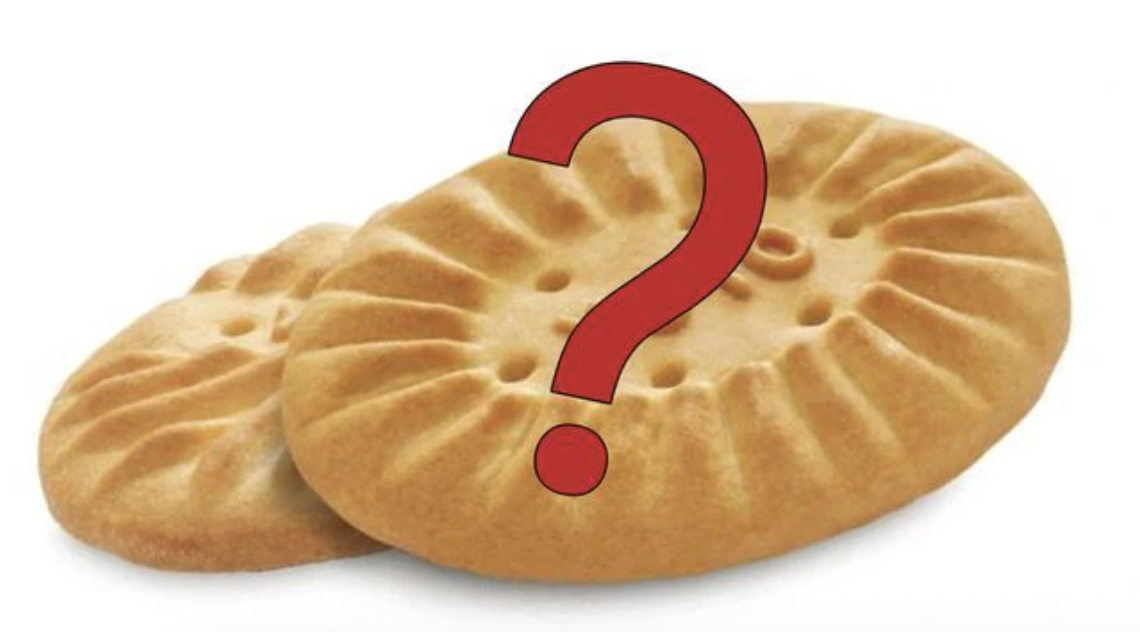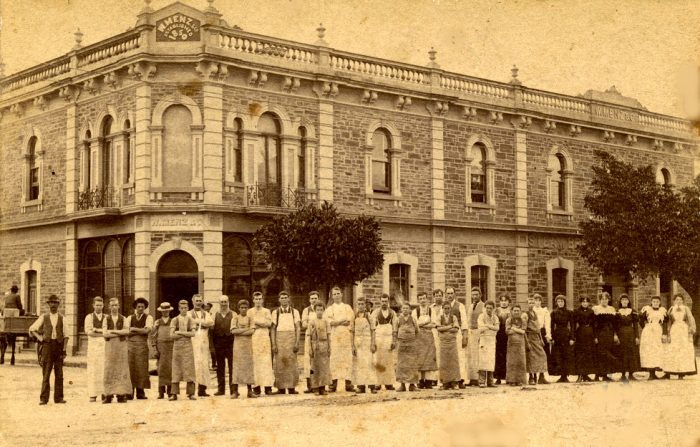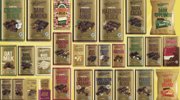
When Australians in one state discovered that a beloved treat was about to disappear in 1997, they didn't just complain.
These people staged what can only be described as a full-scale biscuit rebellion.
The outcry was so fierce that Arnott's quickly backtracked and ensured that Yo-Yo biscuits, a honey-flavoured treat, would remain exclusively in South Australia forever.
South Australian content creator Brooke Leo discovered this regional food secret the hard way after moving to Queensland back in 2021.
In a video, she shared her shock that Yo-Yo biscuits are only sold in South Australia, with many learning for the first time about the invisible food borders that exist within their own country.
'To all the people in Adelaide, I have a shocking fact to tell you,' she prefaced in the video.
'You know Yo-Yo biscuits? They don't sell them anywhere else in Australia.'
Leo's revelation resonated with many Aussies, particularly those within South Australia.
'I feel so special,' one comment read. Meanwhile, another jokingly quipped that Arnott's is 'gatekeeping snacks by state'.
A German family's sweet legacy
The story of Yo-Yo biscuits began with two German immigrants, John Menz and Magdalena Lass, who arrived in Adelaide from Hamburg in 1849.
The two married at Holy Trinity Church on North Terrace that same year, and established a modest bakery on Wakefield Street in 1850 where they baked bread, cakes and biscuits while also selling groceries.
What started as a small family business would eventually create one of Australia's most iconic regional foods.
The honey-flavoured Yo-Yo biscuit was developed in 1932 as a direct result of the yo-yo toy craze that swept the world, including Australia. It was a marketing masterstroke that tied a sweet treat to the cultural phenomenon of the moment.
Did you know?
W. Menz and Co. began trading in 1867, with the company tracing its origins to the German immigrants' 1850 bakery. By 1892, they were producing confectionery alongside biscuits, creating South Australian icons including Crown Mints (1892) and later FruChocs (1942). By 1927, their factory was producing 15 tonnes of biscuits weekly, as well as the same quantity of chocolate and confectionery—over 350 different products.
The original Yo-Yo logo is listed as a heritage design under South Australian laws, meaning Arnott's cannot change it.
Each packet contains three different designs of biscuit, all the same shape but embossed with various patterns, with the original design featuring the word 'Menz' in the centre.
The great biscuit crisis of 1997
The most dramatic chapter in Yo-Yo history unfolded in 1997, when Arnott's announced they would remove Yo-Yos from their Family Assorted packets in favour of national uniformity, as the biscuit wasn't popular enough country-wide to survive in the variety pack mix.
The response from South Australians was swift and passionate.
The decision caused 'local outrage,' forcing Arnott's to restore the biscuits, but only within South Australia. This wasn't just about losing a snack—it was about preserving regional identity in an increasingly homogenised marketplace.
About 95 per cent of Yo-Yos produced find their way onto South Australian shelves, with the remaining 5 per cent scattered haphazardly across the country in speciality stores, IGAs, and border towns.
Here's an old advert for the Yo-Yo biscuits:
Source: Donkey Shines/YouTube
Australia's invisible food borders
Yo-Yos aren't the only products locked in a particular region.
Australia's biscuit landscape is surprisingly divided, thanks to the complex history of company mergers and regional loyalties that Arnott's has chosen to preserve rather than eliminate.
While most Australians know Jatz crackers, Victorians and Tasmanians have always preferred Savoy crackers.
The difference? These regional preferences emerged when Arnott's merged with companies, including Brockhoff Biscuits in Victoria during the 1960s acquisitions.
Despite being nearly identical, Jatz contains malt while Savoy uses golden syrup.
Meanwhile, Ginger Nut biscuits come in four different varieties across the country.
Each state was so passionate about their childhood version that Arnott's gave up trying to create a single national recipe. Some are softer, others sweeter, and they even differ in colour depending on where you buy them.
Why preserve the differences?
In our globalised world, why would a company deliberately maintain these costly regional variations?
The answer lies in the deep emotional connection Australians have with their local food traditions.
Yo-Yos came into Arnott's possession in the early 1960s when they purchased W. Menz and Co.'s biscuit division, and have sold under the Arnott's brand ever since.
Yet, rather than standardising everything, Arnott's has recognised that some foods transcend mere snacking—they're part of regional identity.
Regional exclusivity also creates a sense of special ownership and pride that generic national products can't match. It's also clever marketing, as it makes something harder to obtain, making it more desirable to the market.
The modern treasure hunt
For those living outside South Australia but craving Yo-Yos, all is not lost. Sharp-eyed shoppers have reported finding them in select Drakes and IGA stores across Australia.
Some dedicated fans have developed elaborate workarounds to get their hands on the said treat.
Online forums are filled with stories of interstate visitors being asked to bring back packets, and there's even talk of special arrangements for transporting them across state lines.
For Yo-Yo lovers specifically, some Adelaide-based online retailers have been known to post interstate, though it requires thorough searching.
The preservation of these regional food differences in an age of standardisation speaks to something uniquely Australian—our ability to maintain local identity within a national framework.
READ MORE: Discover the secret to snagging Australia's most elusive biscuit
Whether it's a matter of state pride or simply the taste of home, these edible borders remind us that even in our connected world, some treasures are worth keeping close.
Have you discovered any regional food exclusives during your travels around Australia? We'd love to hear about your own food treasure hunts and regional discoveries in the comments below.
Primary source
W. Menz & Co
Cited text: 'In 1849 John Menz and Magdalena Lass arrived in Adelaide from Hamburg. They married in the Holy Trinity Church on North Terrace later that year. Menz ...'
Excerpt: The story of Yo-Yo biscuits began with two German immigrants, John Menz and Magdalena Lass, who arrived in Adelaide from Hamburg in 1849.

SA Memory website no longer available
The State Library of South Australia is committed to connecting people with the stories, collections, and history that shape our state. Since its launch in the mid-2000s, the SA Memory website has provided a digital gateway to South Australia’s rich heritage, offering access to a wide range of...www.samemory.sa.gov.au
Yo-Yo biscuits launched in S.A. - Australian food history timeline
Cited text: 'Yo-Yo biscuits were developed as a result of the yo-yo craze that swept the world, including Australia, in 1932.'
Excerpt: The honey-flavoured Yo-Yo biscuit was developed in 1932 as a direct result of the yo-yo toy craze that swept the world, including Australia. It was a marketing masterstroke that tied a sweet treat to the cultural phenomenon of the moment.

Yo-Yo biscuits launched in S.A. - Australian food history timeline
Yo-Yo biscuits, now made by Arnott's, were first produced by W. Menz and Co. in South Australia and are famous for their honey flavour.australianfoodtimeline.com.au
Menz Confectionery origins in 1850—Australian Food Timeline
Cited text: 'By 1927, the factory was turning out 15 tonnes of biscuits a week and around the same quantity of chocolate and confectionery – a total of more than 350...'
Excerpt: By 1927, their factory was producing 15 tonnes of biscuits weekly, as well as the same quantity of chocolate and confectionery—over 350 different products.

Menz Confectionery origins in 1850 - Australian Food Timeline
Menz Confectionery traces its origins to a grocery store and bakery opened in Adelaide, in 1850 by John (Johann) Menz and his wife Magdalena.australianfoodtimeline.com.au







